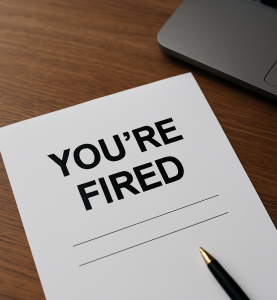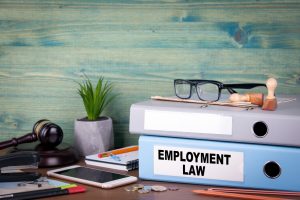UK
Do employers have to pay employees who are off sick with diagnosed coronavirus?
Yes, employees will be entitled to the employer’s usual sick leave and pay provisions, including statutory sick pay. The government has announced that the three-day waiting period for statutory sick pay will be removed temporarily for coronavirus-related absences, backdated to 13 March. The Chancellor also announced that it will reimburse employers with fewer than 250 employees any coronavirus-related statutory sick pay they pay employees for the first two weeks of sickness, backdated to 14 March.
The government has launched online “isolation notes” to provide evidence of the need to self-isolate when someone is absent for more than seven days due to having symptoms of coronavirus.
On 13 March The Statutory Sick Pay (General) (Coronavirus Amendment) Regulations 2020 came into force.
Do employers have to pay employees who are off sick with coronavirus symptoms, but who have not been diagnosed?
Yes, if the employee has symptoms which mean they are too unwell to come to work, they will be entitled to the usual sick leave and pay provisions, including statutory sick pay. The government has announced that the three-day waiting period for statutory sick pay will be removed temporarily for absence related to coronavirus, backdated to 13 March.
Do employers have to pay employees who aren’t actually sick but are quarantined according to medical/government advice?
On 13 March The Statutory Sick Pay (General) (Coronavirus Amendment) Regulations 2020 came into force. These extend statutory sick pay to anyone self-isolating to prevent the spread of Coronavirus in accordance with guidance published by Public Health England, NHS National Services Scotland or Public Health Wales who “by reason of that isolation is unable to work”.
This means that an individual who is otherwise capable of working but who is in self-isolation in accordance with official guidance is entitled to SSP. That individual does not have to have been diagnosed with coronavirus. Current guidance requires self-isolation for seven days by those who are sick, however mildly. The guidance also requires self-isolation for 14 days for individuals in the same household as someone with coronavirus symptoms even if they are well. If an individual in this situation then starts showing symptoms, they should self-isolate for seven days from when the symptoms started. The change to the law gives these individuals a right to statutory sick pay.
Employers will need to consider whether to apply the new statutory sick pay rules to company sick pay as well.
Employees that are legally required to stay away from work are entitled to statutory sick pay (see below).
If the employee is able to work remotely, they will be entitled to usual pay.
If the employee is not able to work remotely, they will still be entitled to full pay if the employer’s policies give a right to pay in these circumstances.
Employers will need to consider whether to apply the new statutory sick pay rules to company sick pay as well.
Do employers have to pay employees if it is illegal to come to work due to compulsory quarantine?
The government has powers to introduce compulsory quarantine under the Civil Contingencies Act 2004 and the Public Health (Control of Disease) Act 1984. So far the government has introduced measures in England under the Health Protection (Coronavirus) Regulations 2020. This allows the Secretary of State or a registered public health consultant to detain people for testing, impose restrictions on travel and activities, or require a person to be kept in isolation. This would mean it would be illegal for an employee to come to work if they are compulsorily detained, restricted or in isolation.
The statutory sick pay rules apply to a person who is deemed incapable of work.
Detention and restrictions on travel and activities can only be required if there are reasonable grounds to believe a person might be infected, or if they have returned from an ‘infected area’ (declared on www.gov.uk). Isolation can only be required if there are reasonable grounds to believe the person may be infected, and it is necessary and proportionate to isolate them to reduce or remove the risk of infecting others.
If they are used, the affected employee will be entitled to statutory sick pay. The statutory sick pay rules apply to a person who is deemed incapable of work. This includes where a person is prevented from working pursuant to an enactment (i.e. these new regulations), and it is known or reasonably suspected that the person is infected or has been in contact with a case of a relevant infection. A person’s entitlement to contractual sick pay in this situation will depend on the wording of the relevant contract or sick pay policy.
US
The newly enacted Families First Coronavirus Response Act provides for a limited period of paid sick leave and expands the Family and Medical Leave Act to provide an extended period of unpaid or partially paid leave for a public health emergency.
The Emergency Paid Sick Leave Act
The Emergency Paid Sick Leave Act (the paid leave provision) requires private employers of fewer than 500 employees (and government employers) to provide paid sick time to employees where the employee cannot work (or telework) because he or she:
- Is subject to a quarantine or isolation order
- Has been advised by a healthcare provider to self-quarantine due to COVID-19 concerns
- Is experiencing COVID-19 symptoms and seeking a medical diagnosis
- Is caring for an individual subject to a quarantine or isolation order or who has been advised to self-quarantine
- Is caring for a child whose school or place of care has been closed or childcare is unavailable due to COVID 19 precautions
- Is experiencing any substantially similar condition specified by the Secretary of the HHS in consultation with the Secretary of the Treasury and the Secretary of Labor.
Employers of healthcare providers or emergency responders may elect not to provide this leave to those employees.
There is a cap on the amount an employer must pay employees receiving Paid Sick Leave.
Employers may require employees to follow reasonable notice procedures to continue to receive Paid Sick Leave after the first workday an employee receives paid sick time.
Paid sick time must be made available to all employees. Full-time employees are entitled to 80 hours of paid sick leave, while paid sick leave for part-timers is equal to the average number of hours the employee works over a two-week period.
Time off for self-care must be compensated at the higher of the employee’s regular pay rate, federal minimum wage, or local minimum wage. Time off to care for a sick family member or a child who is not in school must be compensated at two-thirds of the employee’s regular rate.
There is a cap on the amount an employer must pay employees receiving Paid Sick Leave.
To ease the financial burden of compliance, the Act provides for a limited tax credit equal to the amount an employer pays an employee under this provision.
Emergency FMLA leave is available if an employee is unable to work (or telework) because of needing leave to care for their child under 18 as the child’s school or place of care is unavailable due to a public health emergency.
E- FMLA
The Families First Coronavirus Response Act also contains the Emergency Family and Medical Leave Expansion Act (the ‘E-FMLA’), which creates Public Health Emergency Leave. These amendments are effective through 31 December 2020 and provide for leave due to a public health emergency (i.e. coronavirus).
Emergency FMLA leave is available if an employee is unable to work (or telework) because of needing leave to care for their child under 18 as the child’s school or place of care is unavailable due to a public health emergency.
An employee is eligible for E-FMLA if he or she has been employed for at least 30 calendar days. Employers of health care providers or emergency responders may exempt them from coverage.
All employers with fewer than 500 employees must provide this leave.
The Secretary of Labor can exempt certain employers, including health care providers, emergency responders, and businesses with fewer than 50 employees.
Pay during leave
The Act provides for a combination of unpaid and paid leave. The first ten days may be unpaid, but an employee may elect (and an employer may require an employee) to substitute accrued vacation, personal leave, or medical or sick leave for unpaid leave. For many employees, that period will be paid as a result of the Emergency Paid Sick Time Act. After ten days, employers must provide partial paid leave for each additional day of leave at not less than two-thirds of an employee’s regular rate for the number of hours the employee would otherwise be scheduled to work. For employees whose hours fluctuate, the employer can take an average over a six-month period.
The amount employers must pay employees receiving E-FMLA is capped (no more than USD 200 per day and USD 10,000 in aggregate).
The Secretary of Labor can exempt certain employers, including health care providers, emergency responders, and businesses with fewer than 50 employees.
As with the Emergency Paid Sick Time Act, employers may claim a limited refundable employment tax credit, subject to conditions.
[ymal]
Contributing authors to this piece include Bethan Carney and Karen Baxter of UK member firm, Lewis Silkin, Rachel Ziolkowski Ullrich, Sarah Pierce Wimberly and Jeffrey S. Ashendorf of US member firm, FordHarrison.





















